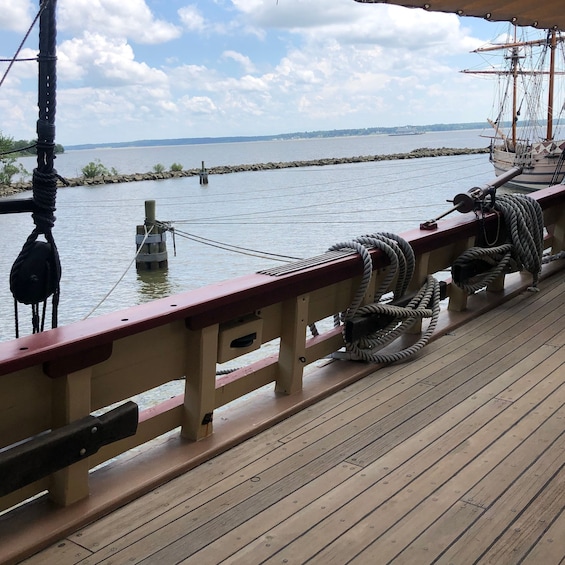Benefit from access to the Jamestown Settlement and the American Revolution Museum at Yorktown with a combo ticket. See two living-history museums that tell the storey of America’s beginnings. Discover the real people and events of America’s first permanent English colony, and the American Revolution which lead to the establishment of a new nation almost two centuries later. Explore immersive, artifact-filled exhibition galleries with 4-D experiential theatres. Take part in hands-on activities and living-history demonstrations in outdoor re-created settings to learn about life in the 17th and 18th centuries.
Jamestown Settlement:
Learn about the early 17th-century English colonists at the Jamestown Settlement through a combination of film, gallery exhibits, and outdoor living history. Discover more about the cultures of the Powhatan Indians, Europeans, and Africans who converged in 17th-century Virginia. Trace Jamestown’s beginnings in England and the first century of the Virginia colony.
The American Revolution Museum at Yorktown
Get a sense of the transformational nature and epic scale of the American Revolution at the American Revolution Museum at Yorktown. Begin your visit in the 170-seat museum theatre, “Liberty Fever,” which takes you into the world of Revolutionary America, setting the stage for the indoor gallery and outdoor living-history experiences. Enjoy an introductory film narrated by an early 19th-century storyteller who travelled the country gathering stories about the American Revolution and shares his accounts using a moving panorama presentation of the time period.
Explore the 22,000-square-foot permanent exhibition galleries which portray the tumult, drama, and promise of the Revolution through period artefacts and immersive environments, dioramas, interactive exhibits, and short films.
Discover a Continental Army encampment which represents a portion of an American regiment. See faithful recreations of soldiers' living quarters, surgeon's tents, and an artillery demonstration era. Make your way to a Revolution-era farm which with a replica of a typical farm house, kitchen, and tobacco barn. See the new building representing quarters for enslaved people, along with the crop fields, a corncrib, and orchard.




